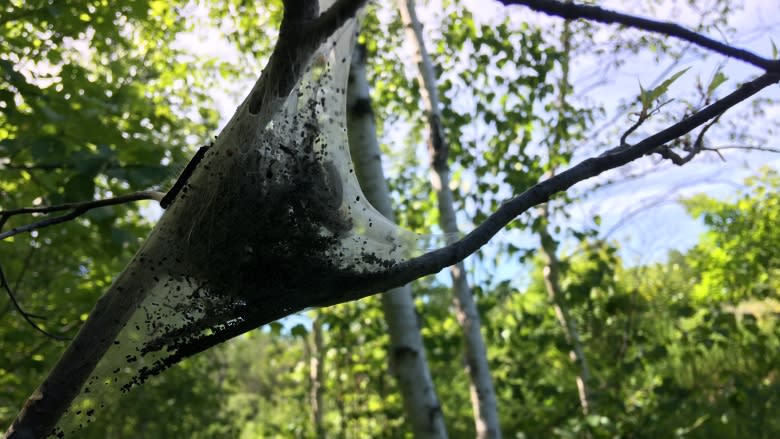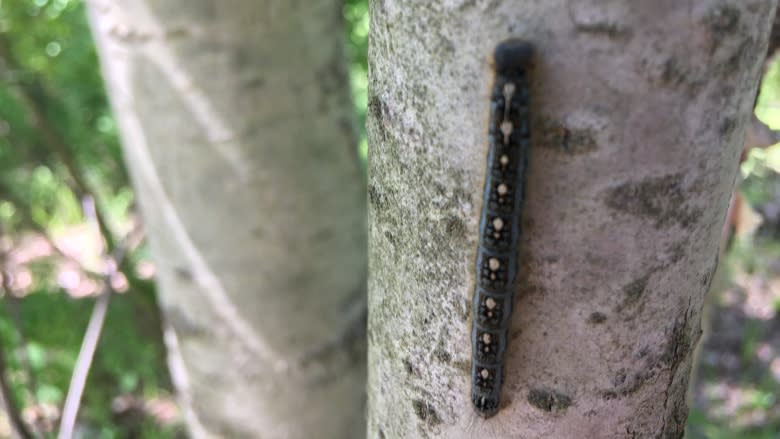Tent caterpillars: What you need to know about Ottawa's insect invaders
If you spent any time outdoors this spring, you probably noticed the abundance of caterpillars.
Any place you'll find greenery—parks, trees, gardens—you're sure to find a caterpillar or two. Or 2,000.
But fear not. The caterpillars, say entomologist Chris Schmidt, are harmless.
Schmidt spoke to Hallie Cotnam on Thursday's edition of Ottawa Morning about the caterpillar invasion, and what can be done to protect your trees and plants. Spoiler: not much.
What exactly are they?
Schmidt says there are two types of caterpillars people in the Ottawa area are noticing: the eastern tent caterpillar, which is typically black and orange in colour with a line running along the top of it, and the forest tent caterpillar, which is black and blue with circular white markings on top.
"The one responsible for the most defoliation is the forest tent caterpillar, and that's the one that tends to get noticed. But the eastern tent is the one that actually makes a tent, the forest tent does not," said Schmidt.
The "tent" in this case is the nest that the caterpillars form, usually in the branches or trunks of trees.
'Basically all they do is eat'
"In the case of the eastern tent [caterpillar], they will sort of hang out inside their tent, and then when the sun comes out and it warms up enough, they march out to the ends of the branches and munch away on leaves," said Schmidt.
"That's 90 per cent of what caterpillars do: they just eat and eat and eat. The adults don't have any functioning mouth parts, so once they get to the adult stage, there's no eating, so all their food reserves are acquired in the larval stage. So basically all they do is eat."
Schmidt said the forest tent caterpillar does something similar, but without the actual tent. The caterpillars will cluster together, often along a tree trunk.
Why are there so many this year?
"One of the most interesting things in the ecology of the tent caterpillars is the cyclical, or periodic, outbreaks," said Schmidt. "A lot of research has gone into what the mortality agents are. And what causes these huge population bursts, on average, every 10 years."
It's a puzzle entomologists haven't yet solved.
"It's a very complicated answer, and we don't fully understand it yet. But we know that climate plays into that equation. So, mild winters and mild springs are favourable for tent caterpillars."
Are they dangerous?
Schmidt said that humans have nothing to worry about it when it comes to caterpillars.
"The only diseases that they're affected by are very specific to insects. Some of them are even specific to tent caterpillars. And when population levels get really high—just like in humans—the transmission of those diseases is higher, and that tends to knock population levels back down."
OK, so they're not harmful to humans. But what about that tree in your backyard?
Schmidt said that if they are accumulating on a particular tree or shrub, you can remove them. But he added that there's not much point in killing them.
"You can peel some of the caterpillars off. You kind of have to get them early on. Often by the time we notice them, and by the time the tree is defoliated, the caterpillar has done its part," said Schmidt.
"This is a process that's been going on for thousands of years. And they don't generally kill the tree unless they defoliate the entire tree for multiple years in a row."



